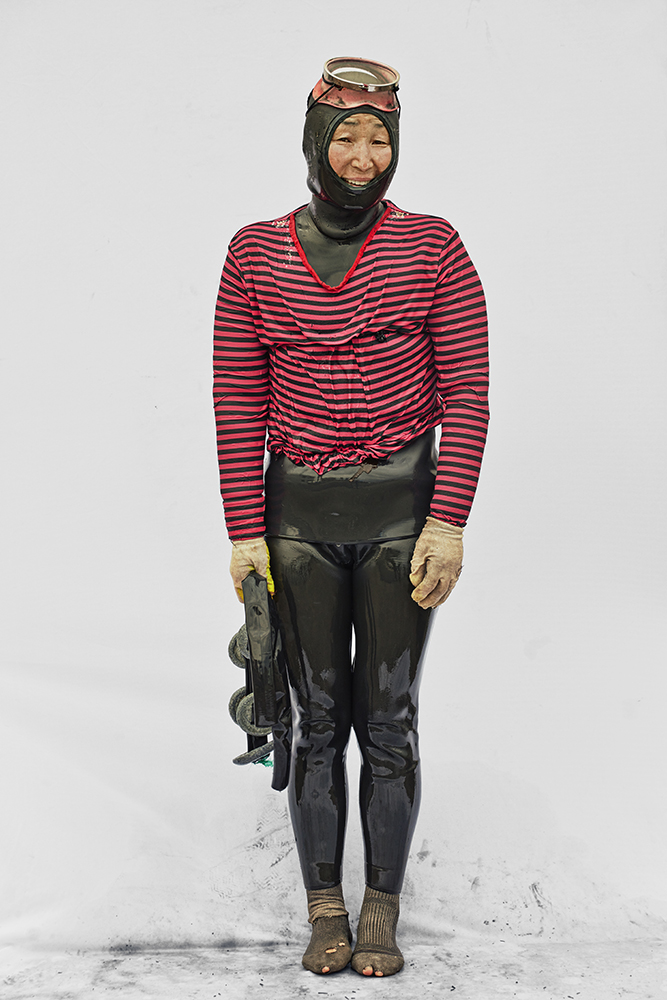
Cha Yersook, Udo Jeju © Hyung S. Kim, 2017
Haenyeo:
Sea Women
Hyung Sun Kim
Hyung S. Kim’s Haenyeo: Sea Women series features female divers in the Korean province of Jeju Island whose livelihood consists of harvesting a variety of abalone, clam, and other sea life from the ocean. Haenyeo — translated literally as “sea women (海女)”— refers to female divers from South Korea and their culture. Kim has documented haenyeo since 2012, capturing the women who are known for their exceptional ability to dive for prolonged times without any breathing apparatus. Haenyeo women dive about five to seven hours a day, holding their breath up to three minutes
Their tenacious refusal to use modern gear comes from a belief that taking only what the ocean allows is the right way of fishing. In coastal regions, where land crops are scarce, and men are often away for trades, haenyeo tradition has been an essential means to support the family.
Kim photographs haenyeo in their most genuine state after their prolonged dives. Despite their age—ranging from their sixties to even eighties—the haenyeo appear firm and proud in their handmade diving garments. Kim’s work pays tribute to the strength of the haenyeo and all maternal figures who have made sacrifices to support their families.
La serie Haenyeo: Sea Women de Hyung S. Kim presenta a mujeres buceadoras de la provincia coreana de la isla de Jeju, cuyo sustento consiste en recolectar una variedad de abulones, almejas y otras especies marinas del océano. Haenyeo – traducido literalmente como “mujeres del mar (海女)” – se refiere a las buceadoras de Corea del Sur y su cultura. Kim ha documentado más de ti00 haenyeo desde 2012, capturando a las mujeres que son conocidas por su capacidad excepcional para bucear durante períodos prolongados sin ningún aparato respiratorio. Las mujeres Haenyeo bucean entre cinco y siete horas al día, aguantando la respiración hasta tres minutos. Su tenaz negativa a utilizar equipos modernos proviene de la creencia de que tomar solo lo que el océano permite es la forma correcta de pescar. En las regiones costeras, donde los cultivos terrestres son escasos y los hombres a menudo se ausentan para comerciar, la tradición haenyeo ha sido un medio esencial para mantener a la familia.
Kim fotografía haenyeo en su estado más genuino después de sus prolongadas inmersiones. A pesar de su edad, que va desde los sesenta hasta los ochenta, los haenyeo parecen firmes y orgullosos con sus prendas de buceo hechas a mano. El trabajo de Kim rinde homenaje a la fuerza de las haenyeo y a todas las figuras maternas que se han sacrificado para mantener a sus familias.
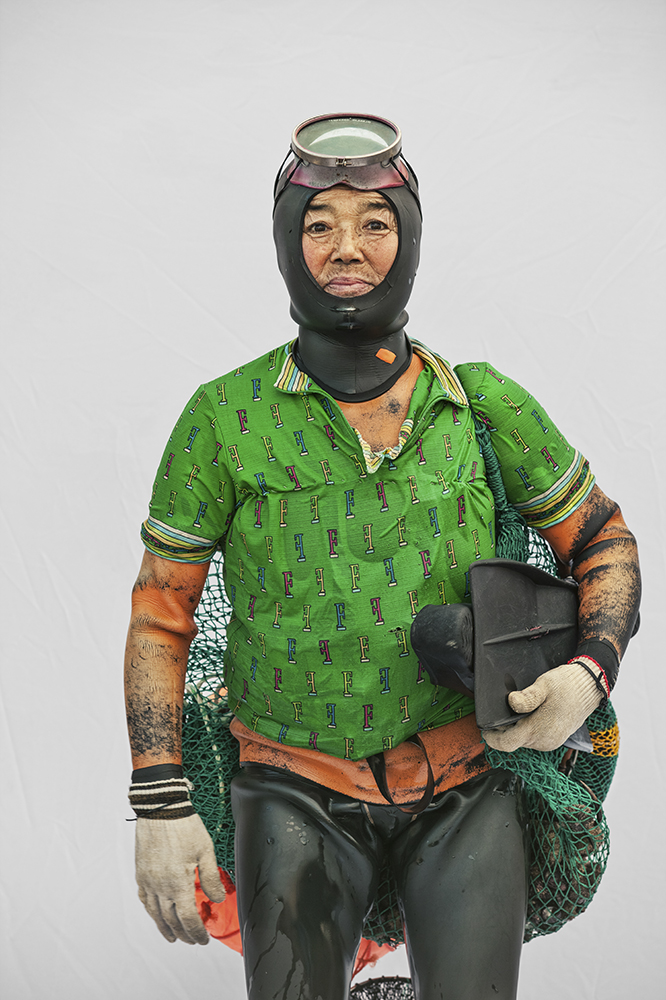
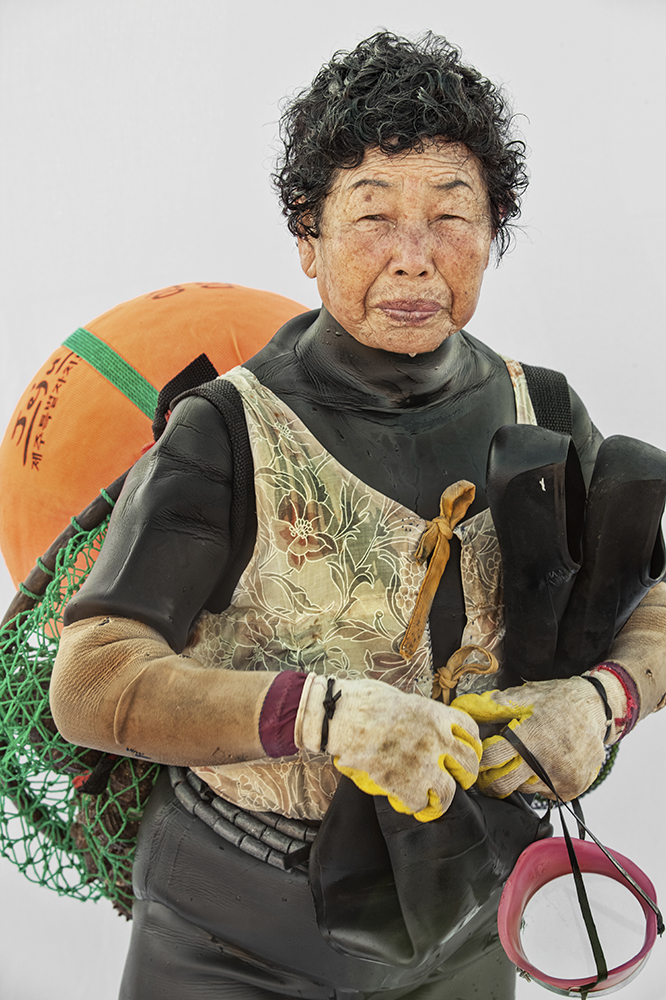
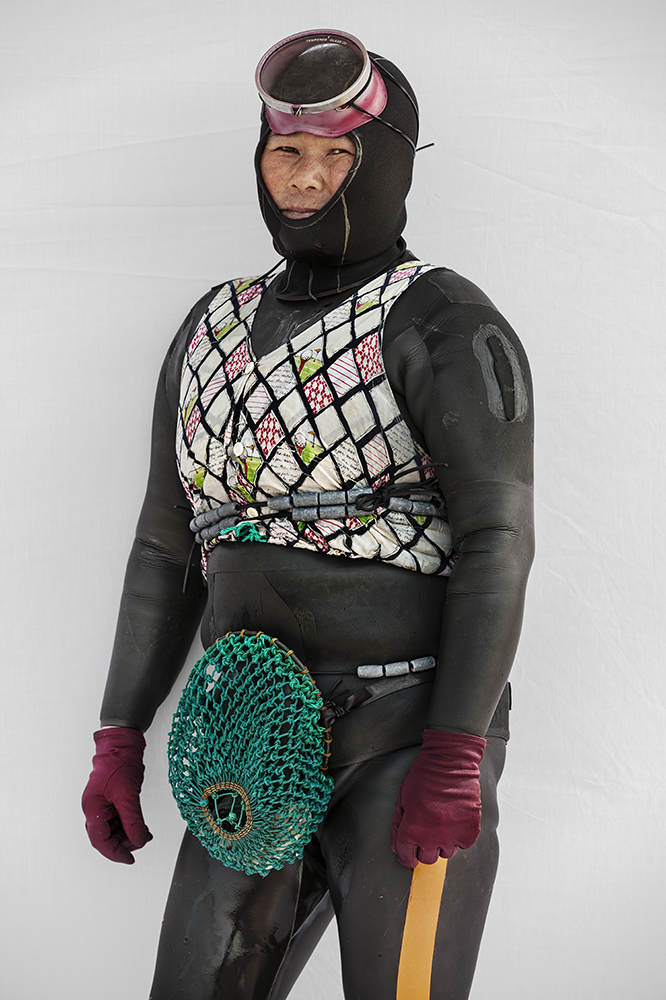
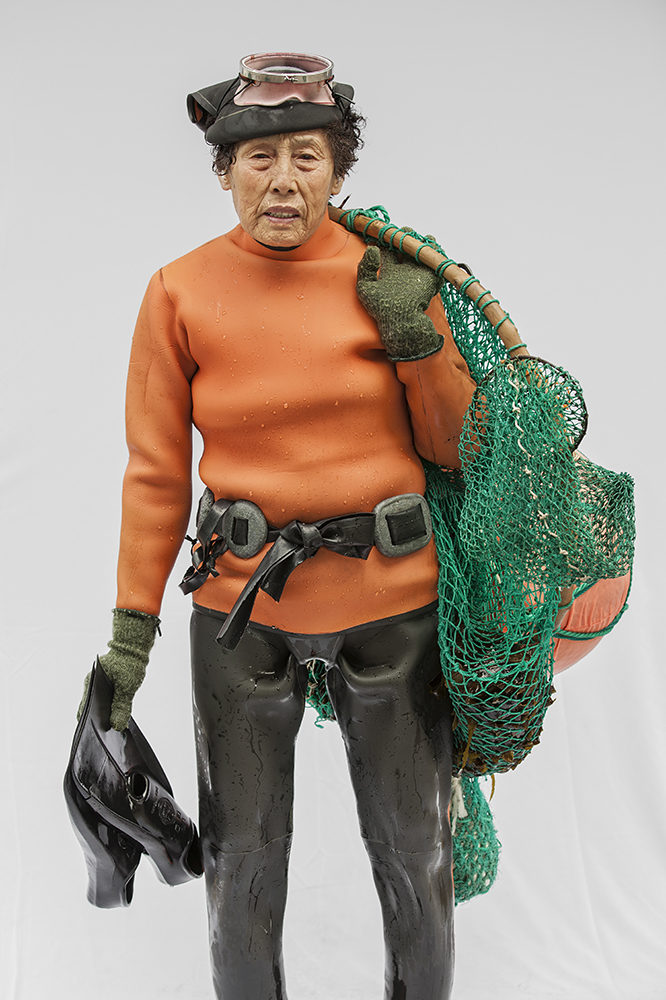
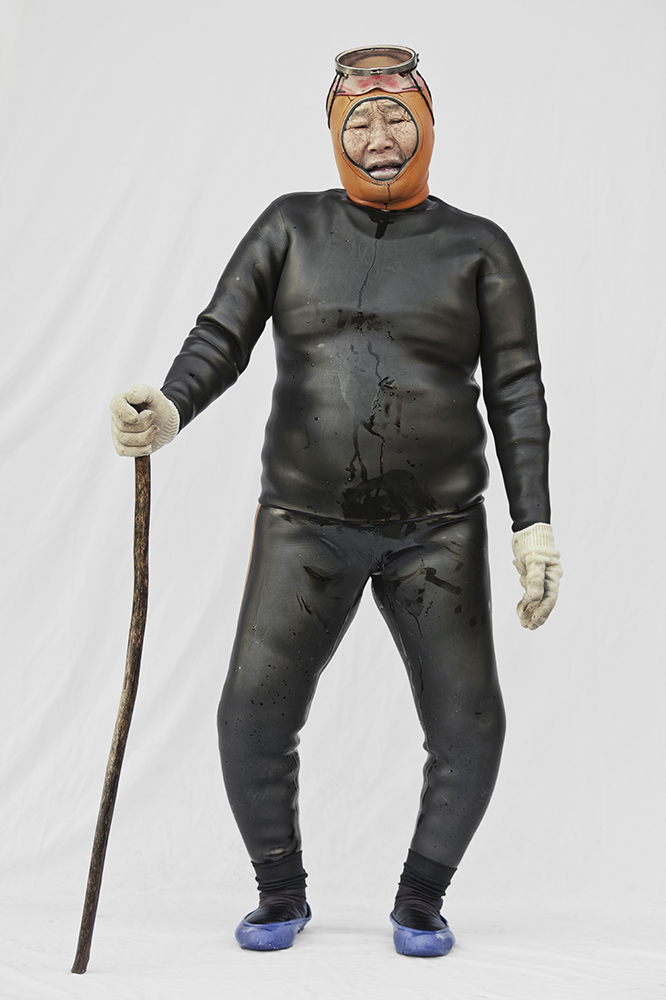
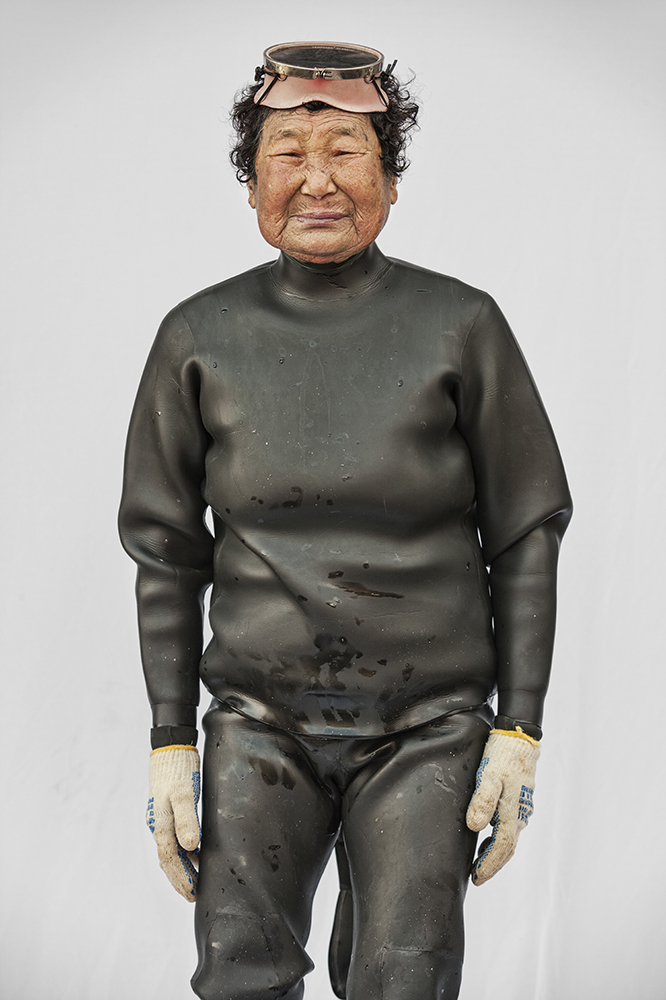

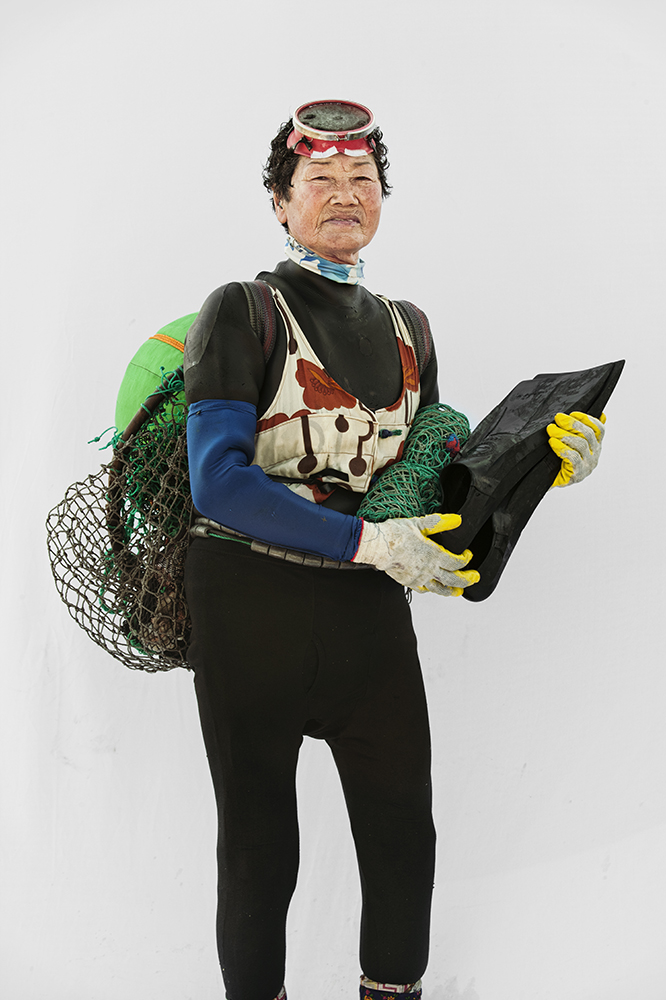

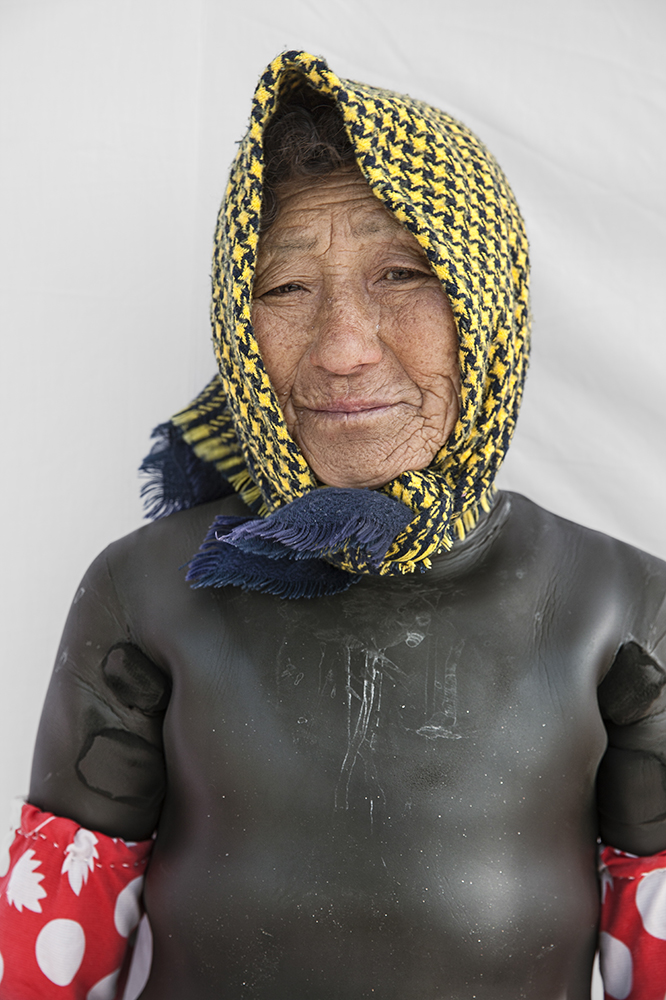
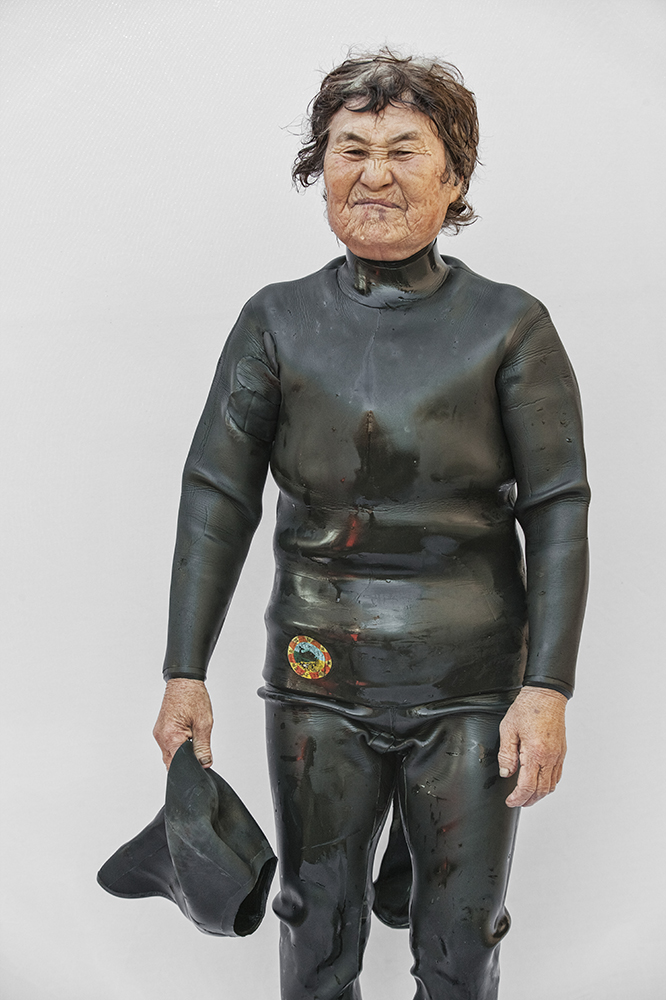
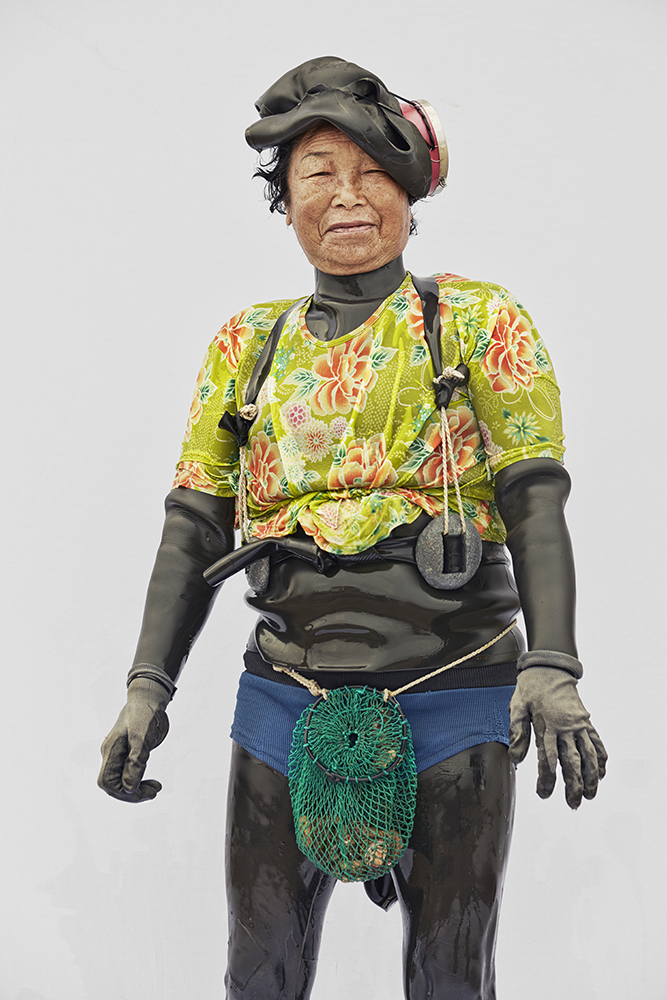
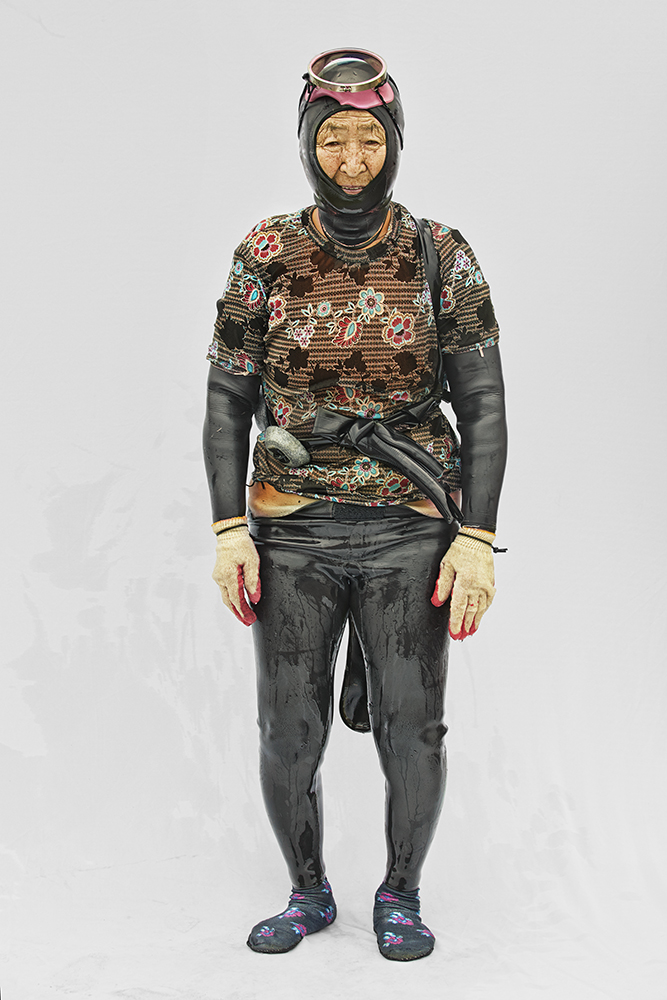
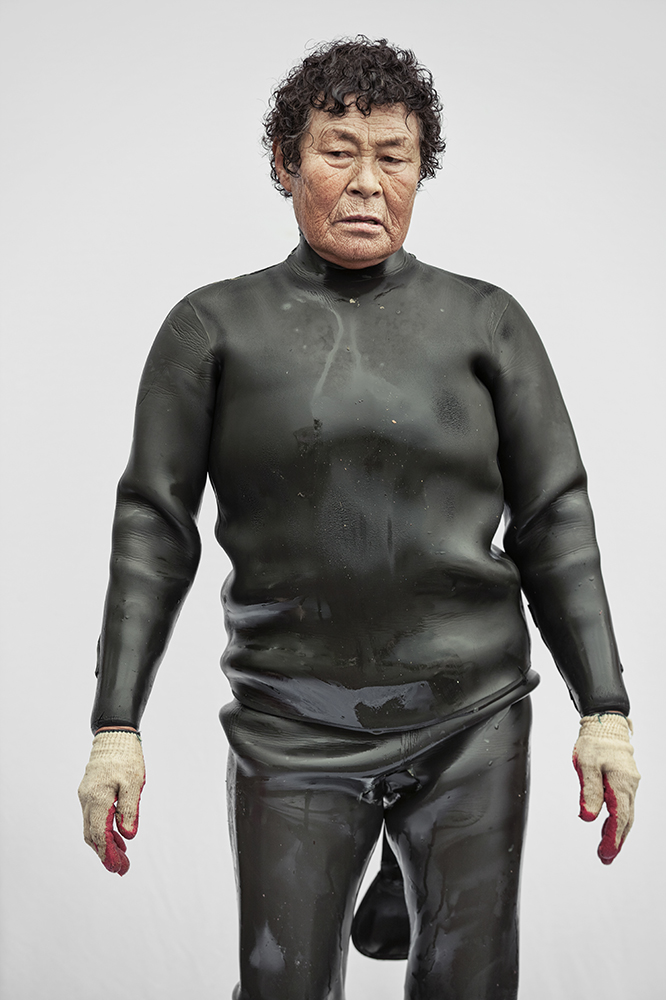
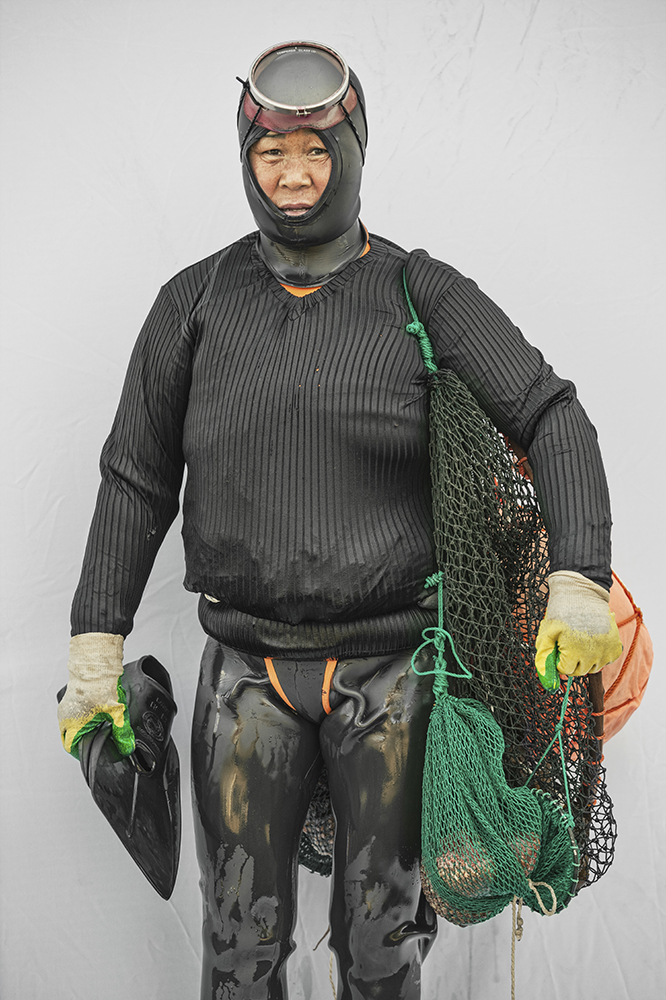
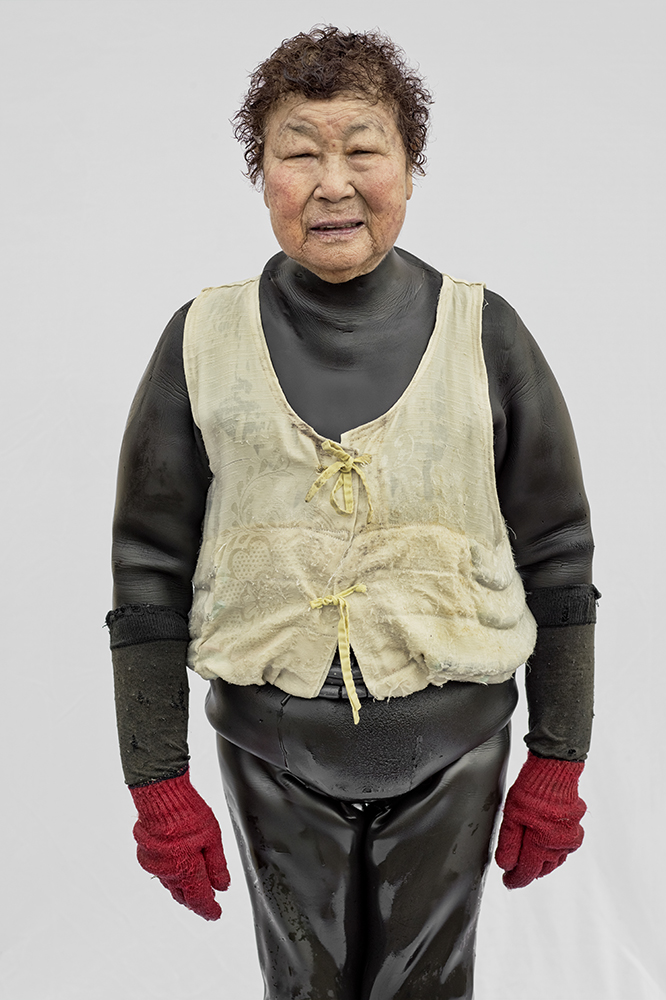
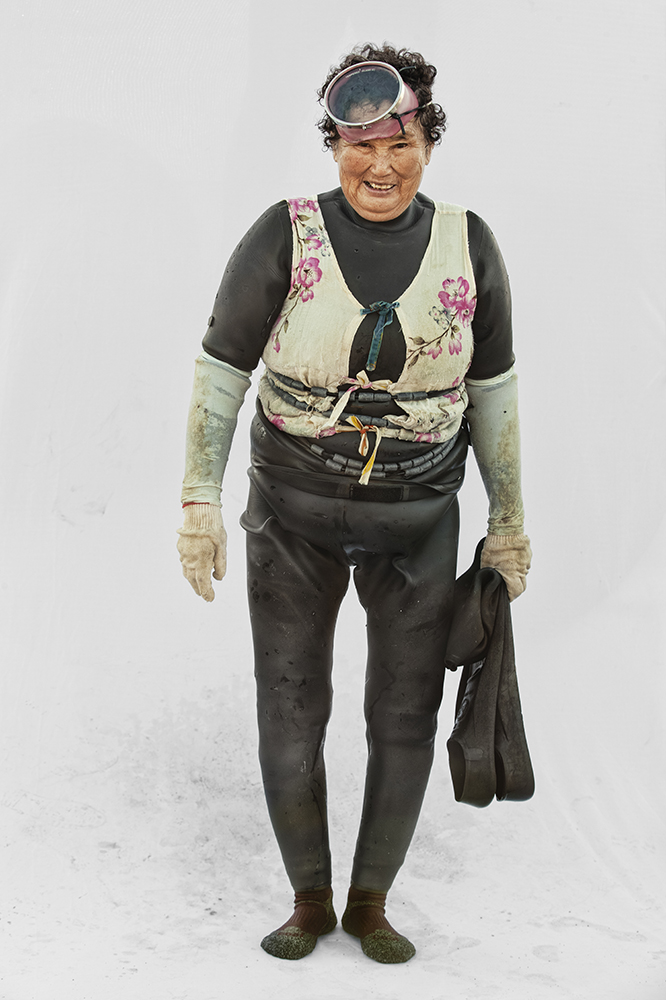
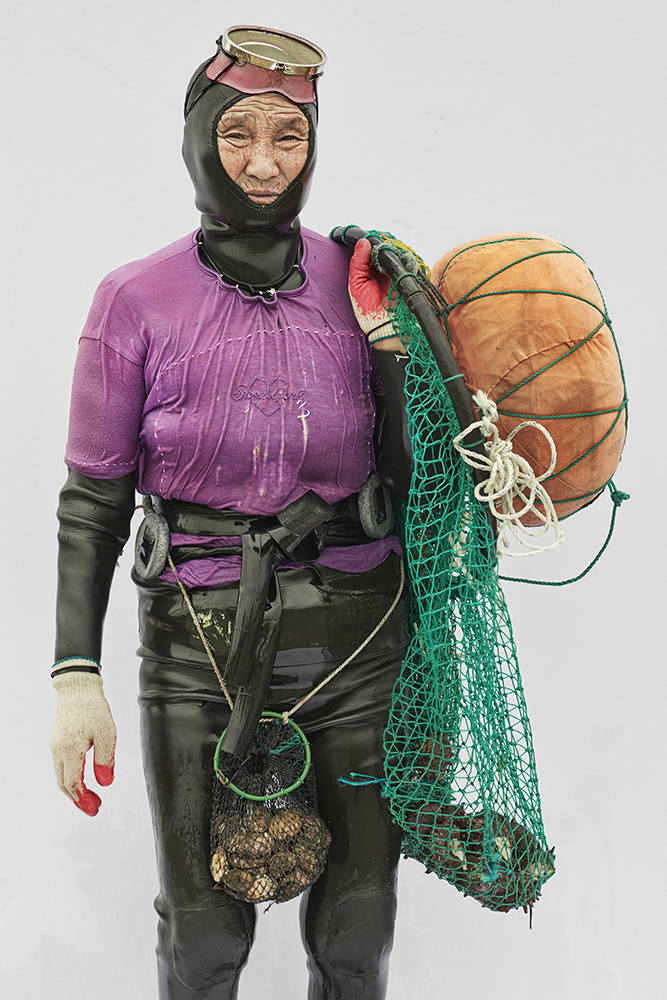
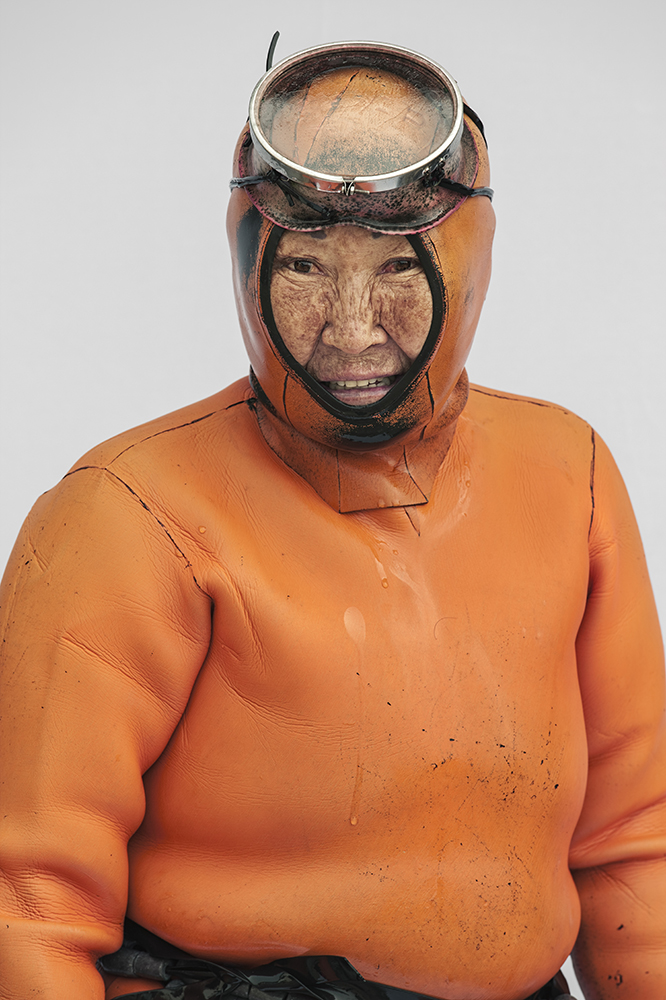
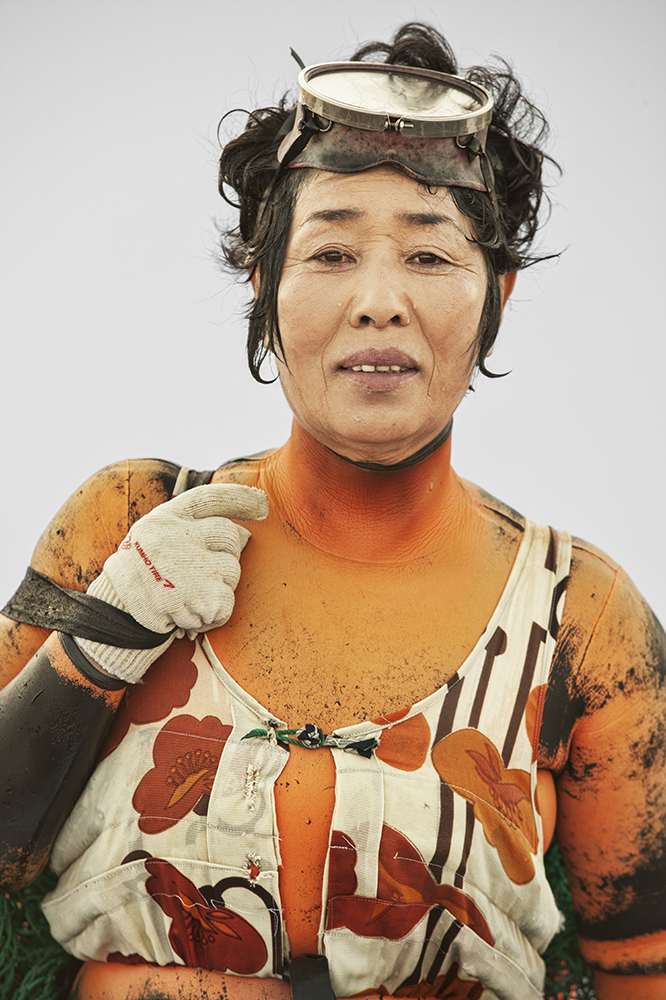
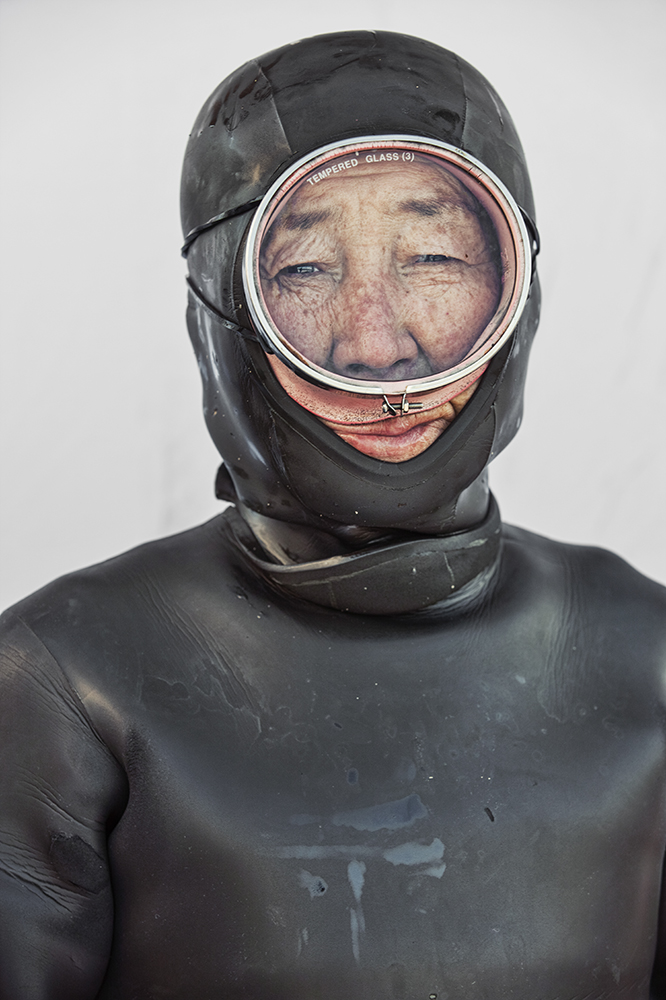
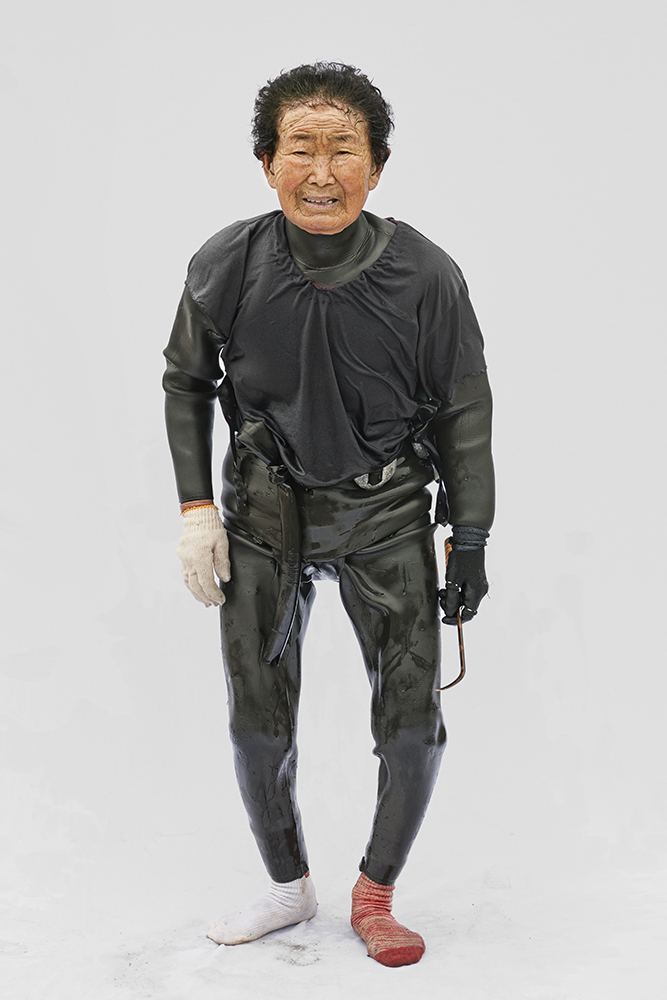
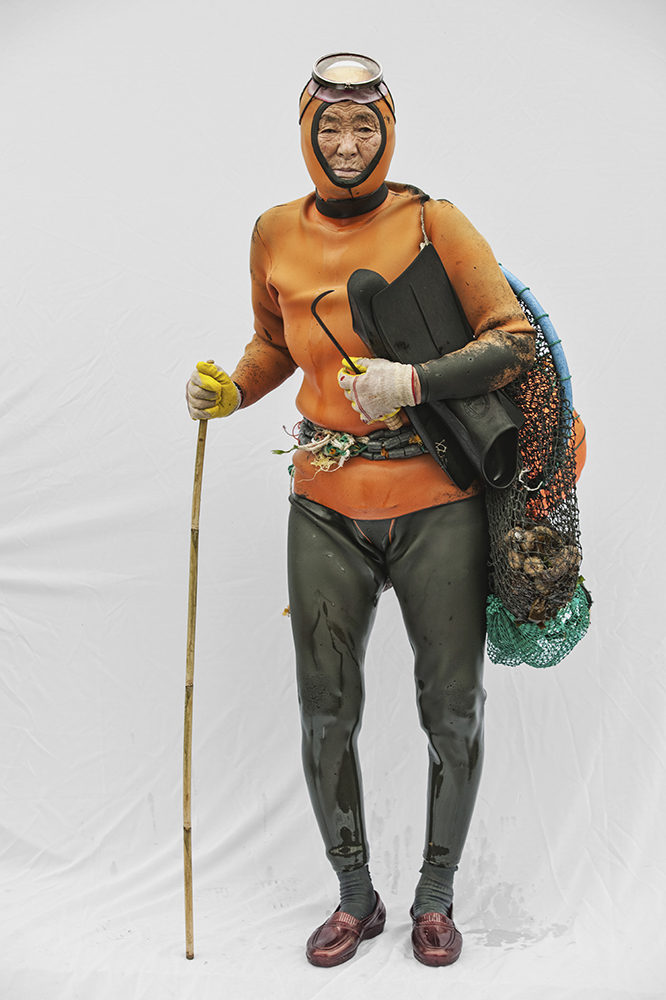

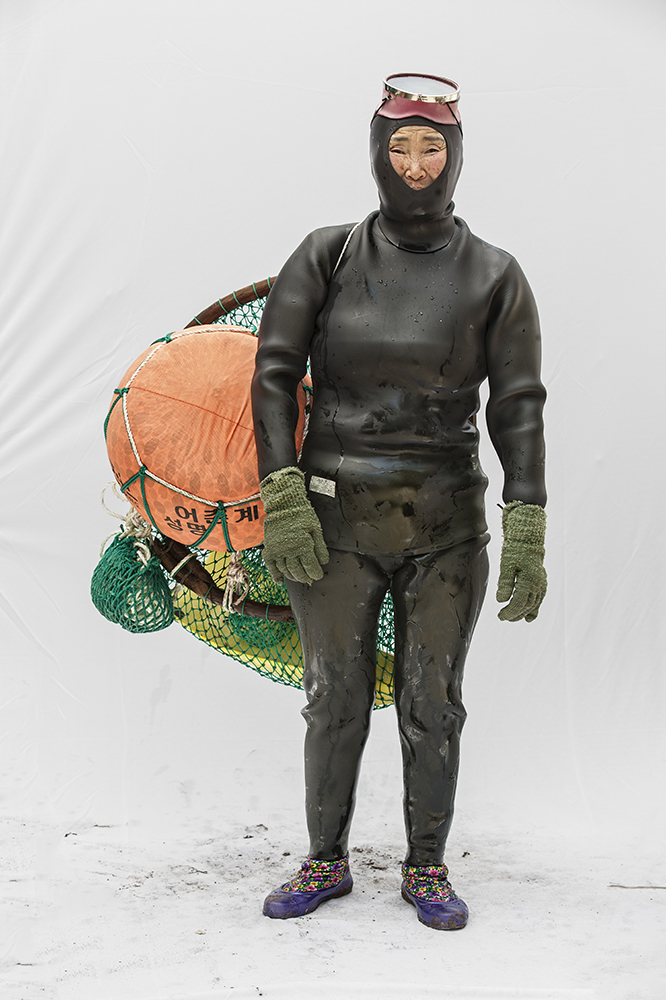
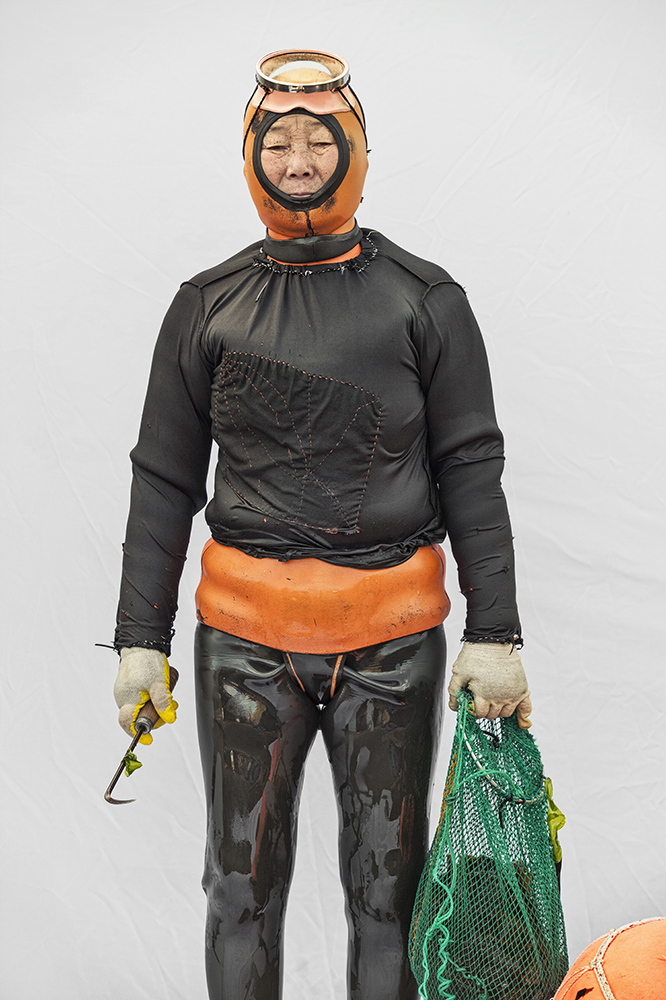
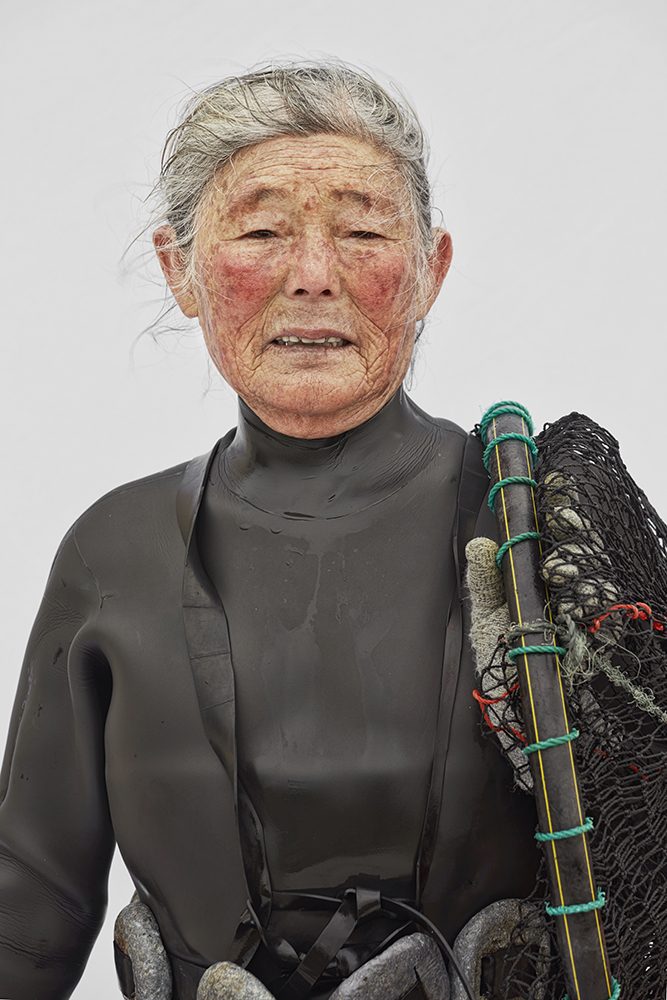
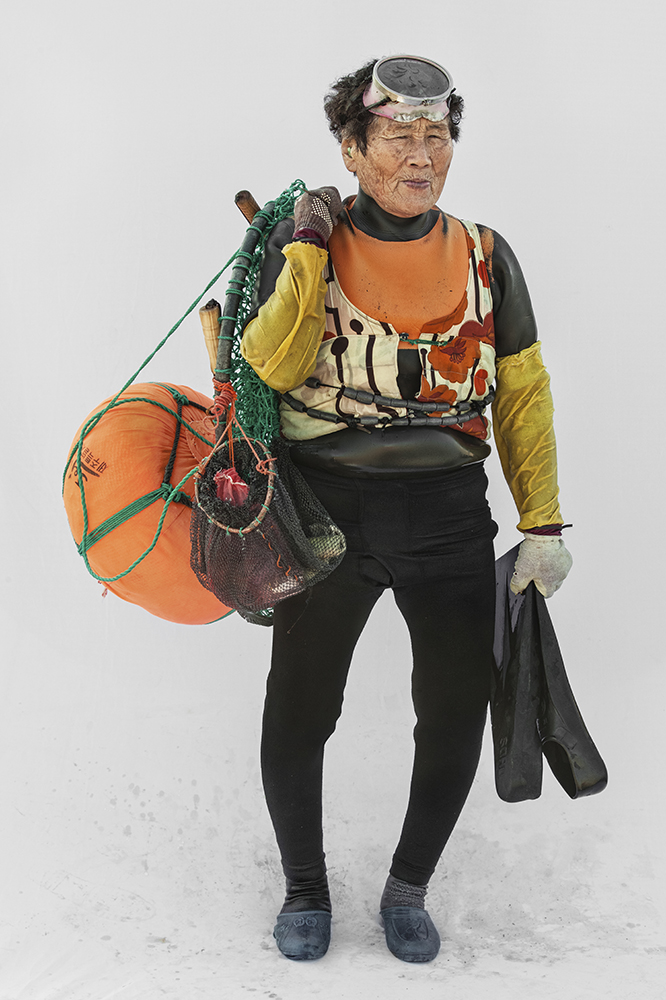

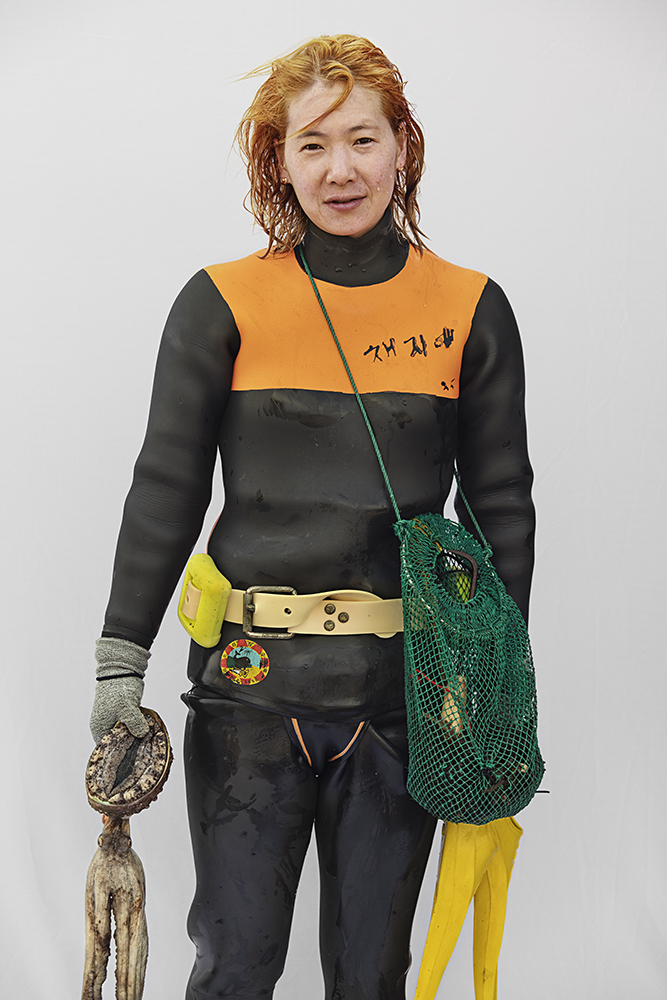


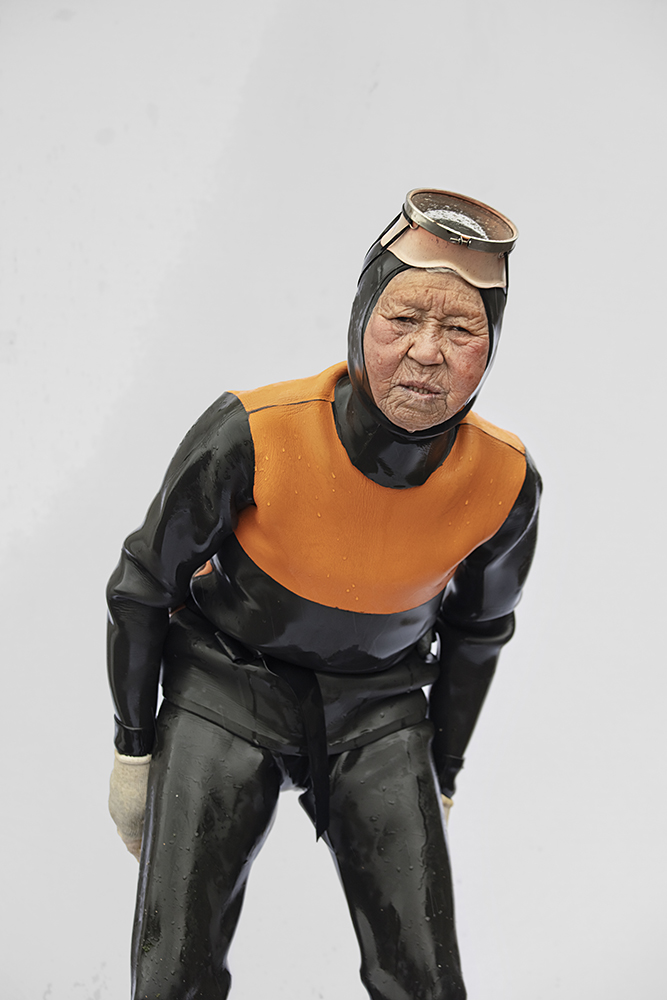
Haenyeo History
Haenyeo’s long matriarchal lineage and unique indigenous cultural heritage dates back at least 1,000 years, according to written records, when people first began to dive for food in the sea. Most haenyeo today reside in Jeju, yet can be found on all coasts of Southern provinces. These women are the primary providers for their families, and have formed the familial, cultural, and essential core of the entire island.
The life of haenyeo begins when a girl turns 15 or 16 after receiving training in swimming and underwater harvesting, and their practice continues until the age of 60 or older. Physical conditions such as a high lung capacity, ability to withstand water pressure, and ability to adjust to cold water are needed. Jeju haenyeo have accumulated their skills and wisdom over the years by learning the effective use of physical strength and knowledge of the ocean from senior haenyeo, who recognizes that the sea should be preserved, instead of being mass harvested. Their matriarchal ethics and sustainable fishing practice have been widely recognized as a notable example of eco-feminism and their wisdom passed down to future generations. Honoring the importance of this tradition—and in recognition of the dwindling numbers among divers from around 20,000 in the 1960s to just 2,5000 in recent years — haenyeo has been recognized as a UNESCO Intangible Cultural Heritage in 2016.
Historia de Haenyeo
El largo linaje matriarcal de Haenyeo y el patrimonio cultural indígena único se remontan al menos a 1.000 años, según registros escritos, cuando la gente comenzó a bucear en busca de comida en el mar. La mayoría de los haenyeo residen hoy en Jeju, pero se pueden encontrar en todas las costas de las provincias del sur. Estas mujeres son las principales proveedoras de sus familias y han formado el núcleo familiar, cultural y esencial de toda la isla.
La vida de haenyeo comienza cuando una niña cumple 15 o 16 años después de recibir entrenamiento en natación y recolección submarina, y su práctica continúa hasta los 60 años o más. Se necesitan condiciones físicas como una alta capacidad pulmonar, la capacidad de soportar la presión del agua y la capacidad de adaptarse al agua fría. Jeju haenyeo ha acumulado sus habilidades y sabiduría a lo largo de los años al aprender el uso efectivo de la fuerza física y el conocimiento del océano de la mano de haenyeo senior, quien reconoce que el mar debe preservarse, en lugar de ser cosechado en masa. Su ética matriarcal y su práctica de pesca sostenible han sido ampliamente reconocidas como un ejemplo notable de ecofeminismo y su sabiduría transmitida a las generaciones futuras. Honrando la importancia de esta tradición, y en reconocimiento a la disminución del número de buceadores de alrededor de 20.000 en la década de 1960 a solo 2.5000 en los últimos años, haenyeo ha sido reconocido como Patrimonio Cultural Inmaterial de la UNESCO en 2016.
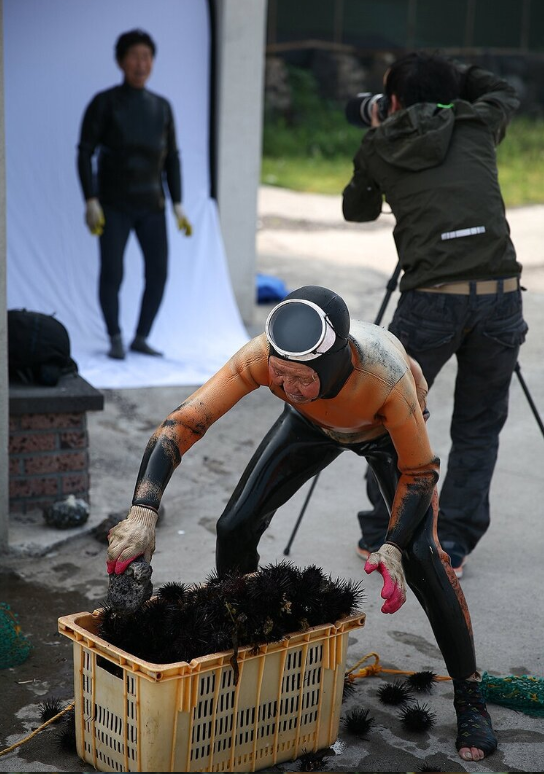
Artist’s portrait ©
Hyung S. Kim, 2014
About Hyung Sun Kim:
Born in Seoul, Korea, Hyung Sun Kim has been working in commercial photography for years, and became inspired by the historical and geographical uniqueness of haenyeo, or Korean female shellfish divers. Kim has been documenting haenyeo everyday life in Jeju Island, South Korea since 2012. He has presented his work in cities around the world, including Boston, MA; New York City, NY; Los Angeles, CA; San Francisco, CA; London, UK; Geneva, Switzerland; Toulouse, France; Dublin, Ireland; Sydney, Australia; Seoul, Korea; Beijing, China; Taipei, Taiwan; and Stockholm, Sweden. His work has exhibited His most recent shows were at the Moderna Museet Malmö in Sweden in 2020, and at the Australian National Maritime Museum in Sydney, Australia in 2021.
Acerca de Hyung Sun Kim:
Nacido en Seúl, Corea, Hyung Sun Kim ha trabajado en fotografía comercial durante años, y se inspiró en la singularidad histórica y geográfica de las haenyeo, buceadoras de mariscos coreanas. Kim ha estado documentando la vida cotidiana de haenyeo en la isla de Jeju, Corea del Sur desde 2012. Ha presentado su trabajo en ciudades de todo el mundo, incluyendo Boston, MA; Ciudad de Nueva York, NY; Los Ángeles, California; San Francisco, CA; Londres, Reino Unido; Ginebra, Suiza; Toulouse, Francia; Dublín, Irlanda; Sydney, Australia; Seúl, Corea; Beijing, China; Taipei, Taiwán; y Estocolmo, Suecia. Su obra ha sido expuesta Sus exposiciones más recientes fueron en el Moderna Museet Malmö en Suecia en 2020, y en el Museo Marítimo Nacional de Australia en Sydney, Australia en 2021.
